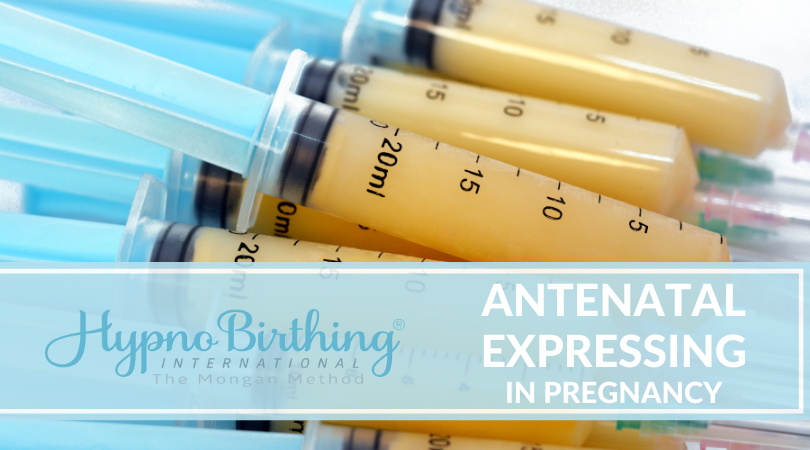Time is Up – Let’s get this labour started
 You’ve been given an EDD (possibly a couple of changes in the EDD as your pregnancy has progressed) and now you are testing all your levels of patience to not spend every waking, and sleeping hour obsessed with your impending labour. We hear you!
You’ve been given an EDD (possibly a couple of changes in the EDD as your pregnancy has progressed) and now you are testing all your levels of patience to not spend every waking, and sleeping hour obsessed with your impending labour. We hear you!
You may be:
A: In the final weeks of pregnancy, and feeling uncomfortable and very ready for your baby’s birth.
B: At 40 weeks or just past and feeling like your baby is now late, and the phone calls and texts from well intentioned friends and family is a constant reminder that your baby has not complied with the time frame you’ve been given.
C: At 41 weeks or further and receiving pressure from your careproviders to have your labour induced in the next day or so.
Let’s firstly put some perspective around those dates you’ve been given!
Your EDD is a GUESS Date
- An EDD of 40 weeks is a childbirth myth that has become deeply embedded in our culture and maternity model of care.
- Normal gestation for a pregnancy is 38 – 42 weeks. That is a wide window, so focusing on a date can cause a mother to feel that her baby is late.
- The EDD is based around Naegeles Rule (a formula publicized in 1812 by a German obstetrician, Franz Naegele). He based it upon evidence from the bible that human gestation lasts approx. 10 lunar months. We have been led to believe that 280 days is an average gestation, but there is a glaring flaw in this rule, as 10 lunar months calculates to 295 days, a full 15 days longer than what we’ve been led to believe.
- There are variations to the rule of the EDD, as 1st time pregnancy gestation will differ from subsequent pregnancies.
- The EDD is also calculated on the 28 day cycle, and if a woman’s cycle is significantly longer than 28 days her baby may be forced out early, which can result in a premature baby with potential health risks at birth.
- Only 3% – 5% of babies are born on their EDD.
- 26% of labours in Australia are induced, the most common cause is ‘prolonged pregnancy’.
- Measuring a babies gestation via ultrasound is not accurate, as there is a 10% window with ultrasound measurement.
This is why the EDD is called ‘estimated’ due dates, as they are Guess Dates. When you take into consideration all of the dot points above, you can see that your baby is not late, in fact, the EDD has put unnecessary pressure on you and your baby. Your baby didn’t get the memo about the EDD, and is most likely happily resting in preparation for the wonderful day ahead when he or she will be gazing into your eyes for the very first time, and at the perfect time for your baby.
So how can you protect these precious final days for your baby, and let your baby lead the way?
Avoiding Unnecessary Intervention
The World Health Organization defines a prolonged pregnancy as one that has gone beyond 42 weeks. Considering that estimated due dates are correct 3-5% of the time and most hospitals prefer to induce between 41–42 weeks, it appears that many babies could be at risk of being born before their lungs are fully developed. If induction is absolutely necessary to ensure the safety of mother and baby, the risks of premature birth are often outweighed.
If your care provider is suggesting induction based on convenience or your estimated due date, it may be worth considering all of your options first before consenting to intervention. It is important to consider the readiness of your baby’s lungs, before agreeing.
There is a theory that placentas start to shut down after 42 weeks, but there is no evidence to support this theory. Placental shutdown (calcification) can occur at 37 weeks, but many placentas are still very healthy at 43 weeks. If this was a concern, you could ask your care provider to perform an ultrasound to determine the health of your placenta.
Inductions are invasive and there are risks will all procedures, fetal distress and c-section being the most common. According to a research study by Ehrenthal et al. (2010), women being induced with their first baby have a 20% increased rate of c-section. Other studies have found that that rate is much higher, ranging from 30% – 50% increased risk.
Induced labour is significantly different to physiological labour, with surges being much longer, and much stronger. Women who are induced miss out on the gentle build up and endorphin release of natural labour. Having your labour induced, puts you on the path of the ‘cascade of intervention’.
What can I do to prevent unnecessary intervention:
- Be patient, be patient, be patient
- Ask for patience from your care providers
- Understand all your options, and the risks associated
- Request significant medical indications before consent to induction
- Negotiate time for your baby to initiate labour spontaneously
- Use natural methods to prepare and relax your body
It is important to understand that trying to force the body and baby to do something when it isn’t ready, is an intervention, no matter how natural the method is. Whilst many of the natural methods are aimed a helping your body to soften, release and relax, your baby has the final say as to when labour is initiated, but it will only happen when all of the physiological changes have occurred.
Know that your body and baby are communicating, and whatever you decide, it must be right for you and your baby, not for your care providers convenience.
Read more about Inductions here.
Natural Methods to Prepare Your Body for Labour
Here are a list of natural methods to help your body soften, release and relax for all the physiological changes required to occur. It is important for you to consult with your care provider to get an all clear before starting any of these methods, especially if you have a pre-existing medical condition.
- Fear Release – Contact a local HypnoBirthing Educator to work with you on releasing any fears that may be causing you to hold tension and prevent your body from releasing.
- Hugs before drugs – love making helps the release of the love hormone oxytocin (required for labour to start), and semen is a natural prostaglandin (that helps to soften the cervix).
- Nipple stimulation / Clitoral stimulation (releases oxytocin)
- Acupuncture
- Acupressure
- Walking
- Visualisation
- Eating spicy foods
- Rasberry leaf
- Date fruit
- Massage
- Rest
Again, it is baby that will initiate labour, so have trust in your body and baby, as they know what to do!
Baby’s Perfect Timing
 There are a number of theories around what triggers labour. We do know that the mother’s pituitary gland secretes oxytocin when the baby is ready and full developed. Oxytocin is the hormone that stimulates surges, and plays an integral role in the natural rhythm of labour. It was previously believed that the mothers body was responsible for starting labour, and another theory was that the baby was responsible for sending a signal to the mother’s body that caused labour to start, but recent research is showing that the baby actually starts labour through the release of proteins when the babies lungs are fully developed.
There are a number of theories around what triggers labour. We do know that the mother’s pituitary gland secretes oxytocin when the baby is ready and full developed. Oxytocin is the hormone that stimulates surges, and plays an integral role in the natural rhythm of labour. It was previously believed that the mothers body was responsible for starting labour, and another theory was that the baby was responsible for sending a signal to the mother’s body that caused labour to start, but recent research is showing that the baby actually starts labour through the release of proteins when the babies lungs are fully developed.
The babies lungs are the last organ to develop inutero, and the University of Texas Southwestern Medical Center at Dallas researchers have found that it is in fact the baby that controls the timing of their birth through the fetal lungs themselves which provide the signal to initiate labour. The proteins SRC-1 and SRC-2 are released from the lungs, or activate genes inside the lungs near full term, causing prostaglandins to be released into the mothers system. The prostaglandins then trigger changes in the cervix and stimulates or leads to an inflammatory response in the uterus causing surges and tightenings to begin.
This research is showing more than just what starts labour. We again get to see just how wise and highly advanced this process is, when left undisturbed. It is showing us how important fetal lung development is in the intricate process of pregnancy, labour and the health of baby postnatally.
Have patience, be informed, know all your options, and avoid unnecessary intervention as you observe the incredible process play out as nature intended.
If you require support, please contact us on 1300HYPNOBIRTH or find an Educator in your area.










